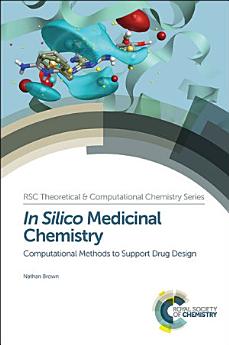In Silico Medicinal Chemistry: Computational Methods to Support Drug Design
Nathan Brown
Oct 2015 · Theoretical and Computational Chemistry Series Book 8 · Royal Society of Chemistry
Ebook
232
Pages
reportRatings and reviews aren’t verified Learn More
About this ebook
Covering computational tools in drug design using techniques from chemoinformatics, molecular modelling and computational chemistry, this book explores these methodologies and applications of in silico medicinal chemistry. The first part of the book covers molecular representation methods in computing in terms of chemical structure, together with guides on common structure file formats. The second part examines commonly used classes of molecular descriptors. The third part provides a guide to statistical learning methods using chemical structure data, covering topics such as similarity searching, clustering and diversity selection, virtual library design, ligand docking and de novo design. The final part of the book summarises the application of methods to the different stages of drug discovery, from target ID, through hit finding and hit-to-lead, to lead optimisation. This book is a practical introduction to the subject for researchers new to the fields of chemoinformatics, molecular modelling and computational chemistry.
About the author
Nathan Brown leads the In Silico Medicinal Chemistry group at The Institute of Cancer Research, London, supporting academic drug design by application of chemoinformatics, computational chemistry and molecular modelling, and developing new methodologies.
Rate this ebook
Tell us what you think.
Reading information
Smartphones and tablets
Install the Google Play Books app for Android and iPad/iPhone. It syncs automatically with your account and allows you to read online or offline wherever you are.
Laptops and computers
You can listen to audiobooks purchased on Google Play using your computer's web browser.
eReaders and other devices
To read on e-ink devices like Kobo eReaders, you'll need to download a file and transfer it to your device. Follow the detailed Help Center instructions to transfer the files to supported eReaders.











